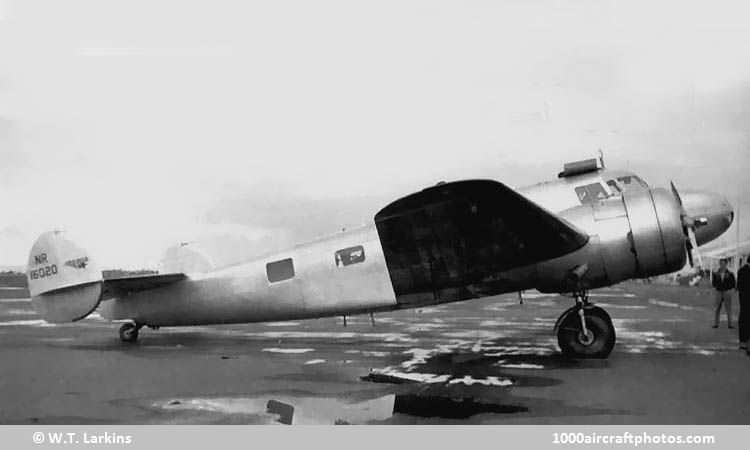06/30/2010. Remarks by Johan Visschedijk: "In the United States, as well as to a lesser extent abroad, Electras were also acquired as executive transports and special-purpose aircraft by private owners. Powered by a pair of 600 hp Pratt & Whitney R-1340-S3H1s Wasp engines, the fifteen Model 10-Es were the most powerful Electras and were developed for Aerovias Centrales after Pan American had exhausted its supply of Wasp SC1s. This version also found a ready market with private owners seeking high-performance aircraft.
Pictured is the most famous of these aircraft that made the headlines during the summer of 1937. Ordered by Purdue Research Foundation for Amelia Earhart, it was delivered in July 1936. Specially fitted with fuselage tanks bringing total capacity up from 200 to 1,200 gal (757 to 4,542 l) and with additional navigation equipment (notably a D/F loop atop its fuselage), this Electra had most of its cabin windows blanked out.
In the 1936 Bendix Trophy Race, from Los Angeles to New York, it was flown into fifth and last place by Amelia Earhart and Helen Richey. However, Amelia Earhart had more ambitious plans for her Electra and, with Fred Noonan as her navigator, she left Oakland on March 17, 1937, for a westbound round-the-world flight. The flight was terminated on the first landing when the aircraft was ground-looped at Honolulu.
Following repairs and minor modifications to NR16020, Earhart and Noonan decided to fly eastward for their second attempt. Six weeks after leaving Oakland on May 20, Amelia Earhart and her navigator had reached the Central Pacific when, on July 2, 1937, they disappeared at sea in the vicinity of Howland Island, almost halfway between Hawaii and Australia."
Read the type remarks on page 5752.
